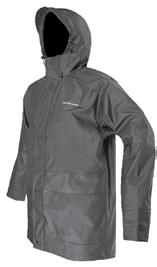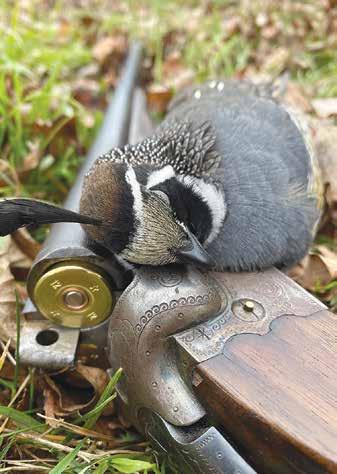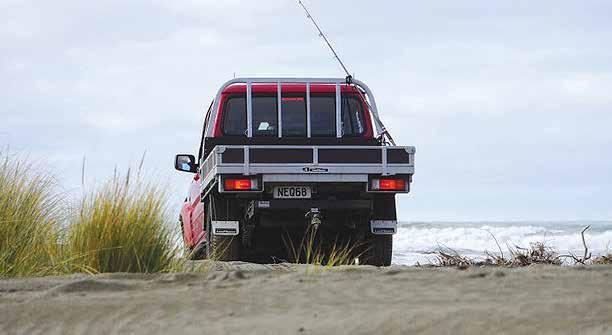














Todd Bruning
To get to French Pass from Takaka, it’s a big day by road—especially towing a boat—so we nudged out the drive at 2.00am.





Channel 01 – Mt. Stokes
Coverage from Cape Farewell in the south to Cape Egmont in the north, and the east from Cape Palliser to Cape Campbell. Most of the Marlborough Sounds, Golden Bay, Tasman Bay , Wellington and Cook Strait. At times. This channel may be workable outside these perimeters.
Channel 04 – Drumduan.
Covers Tasman Bay and the western d’Urville area.
Permanently linked to both channels 60 and 65.
This means that any transmission made on channel 04 is heard simultaneously on both channels 60 and 65 and vice versa.
Channel 60 – Mt. Burnett
Covers Kahurangi Point in the west, all of Golden Bay and the western side of d’Urville Island.
Channel 60 is permanently linked to channel 04 (and subsequently to channel 65) so any transmission made on channel 04 is heard on channel 04, 60, and 65 as well.
Channel 63 – Mt. Kahikatea.
Covers Queen Charlotte Sound, Port Underwood, Cook Strait, south to Cape Campbell, Kapiti and Mana and also parts of Kenepuru and Pelorus Sounds. This channel is good for Wellington approaches but not good within Wellington Harbour. (Mariners are advised to cancel Trip Reports at Barrets Reef buoy).
Channel 65 – Paradise Reserve
Covers Kenepuru and Pelorus Sounds, Havelock, d’Urville, western Cook Strait, parts of Tasman Bay, Golden Bay and large sections of Queen Charlotte Sound.
Channel 66 – Mt. Stokes
Coverage area is similar to Channel 01. This repeater is for commercial users only and is not operator monitored.
Channels 01 and 63 are linked for the marine forecasts only and one operator monitors both channels.
Channels are monitored 0700 hrs to 2200 hrs all year round

Armed with patience and his favoured technique of slow jigging, Niko Van der Zwet concentrated on maintaining a consistent action. A gentle lift and slow retrieve as he worked only the bottom few metres of the water column, was repeated as many times as it took the boat to drift along the face of the drop off. Productive country was about two-thirds along the drift line, but time was required to get the lures down the 80m and into a natural rhythm so they looked life-like.




2.5 tonne braked towing
great rock hopping ground clearance and super visibility
6 speed manual giving you total control
anti braking system ABS
ESP with hill hold/descent control
2WD & 4WD options
all the safety features and mod cons you’d expect.






The hunt for an unknown monster in the ocean has always intrigued me, but freshwater lakes comes close for the sheer anticipation. At any moment, a monster brown or speeding rainbow
Can this get any weirder? Well, thankfully for my sake, something that could pull smoked my lure.



































Many surfcasting beaches, particularly on the West Coast have problematic areas along the shoreline that can lead to the loss of your catch. Gentle Annie Beach at Mokihinui, for example, has stony areas interspersed with sandy in the stony spots is asking for trouble, as line can get severed by the rolling stones in the uneven surfaces. they?

region






Life is what you make it, so why not make each aspect of your life as positive as you possibly can? If you love fishing and diving then this is the opportunity for you.
Henderson’s is at the gateway to the Iconic Marlborough sounds for fishing and diving. Henderson’s is a well-established bricks and mortar retail store on Grove Road, Blenheim, specialising in fishing, diving, boating and pool supplies.
After 22 years of ownership by the Henderson family, and an exciting change of circumstances, the store looking for new owners.
• Access to major brands such as Okuma, Penn, Wettie, Black Magic, Hutchwilco and many more, you will have all your fishing and diving bases covered.
• A long-term lease and a loyal customer base, will let you capitalise on the success of the current owners with plenty of opportunity to utilise existing supply relationships and expand into the hunting, camping and motor caravan markets.
• This is your perfect opportunity to mix business and pleasure.
Trading figures, stock and plant list will be available to any prospective purchaser on completion of a confidentiality agreement.

Contact us Tamzin or Lana Henderson on 027 6457579
Visit us on Facebook here https://www.facebook.com/HendersonsLtd For more photos and details visit Trademe. Type in listing number #:3135359962

It’s

Well, bloody hell. Here we are past the hump for another year and on the downhill slide. Time goes way too quick the older you get and I even mentioned to Lynne the Ruthless the other night that we’ll be lucky to get another 20 years. She thanked me for brightening her day and went back to watching Yellowstone on the TV. The Ruthless is slightly older than I am so she takes getting older a bit more seriously than I do. But, back to where I started.
On the day we went during the second week of the school holidays, it didn’t initially live up to its reputation. We trolled for two and half hours without a touch. While Stacey didn’t complain, I can imagine what he was thinking.




















Young Penny is giving me that look. If you’ve had any dealings with clingy females, you know the look I’m talking about. Pleading puppy-dog-eyes, let me come with you please— please!
front.



Way down low now and we’re diving through a sea of blackberry vines. There’s no porpoising, nor having a whale of a time. It’s all slithering on my dirty belly through pig tunnels, leaving a trail of grey hair hooked on blackberry barbs and cussing like a sailor.






Geez the year rolls around fast—seems a blink ago me mate Rayza Blade and I were chasing Mountain Missiles up the Awatere, in Marlborough. It’s an annual tradition for us to grab the
shotties and head into the hills for a spot of Dickey Bird shooting and this year Rayza dragged his son Marty along. I invited me mate T. P. McPhee and the useless coot turned up with
a side-by-side that dated back to the Boer War and I reckoned that was the last time he used it too.


It was a cold frosty morning up the Awatere—perfect.

Hunting Life: Moments Of Truth
Peter Ryan Bateman RRP $40 Reviewed by Daryl Crimp
Perhaps Hunting Life— Moments of Truth is best summed up in Ryan’s own words, “A hymn to an old way of life and a long love letter of sorts.”






Brian












The uni knot is one of the strongest and most versatile knots. It is quick and easy to tie and once perfected, this method can be tied in the dark.
Thread the line through the eye of the hook.
Fold a long section of tag end back along the main line.
August has always been one of my favourite months regardless of which hemisphere I’ve lived in.
Pinch the tag and mainline together between two fingers and thumb.
Roll the tag back over the two fingers and between thumb and fingers to form a large loop. Roll the wrist so the loop rotates to the bottom.
Thread the tag end through the loop, around the tag and mainline and back through the loop. Repeat this six times.

Hold the hook, the tag end and the main line, pulling tight so the loop closes.

Once the loop is closed, grasp the main line and hook – pulling smoothly until the knot slides tight against the hook. Clip the tag end, leaving 3mm spare.

















Most anglers and hunters
are a down to earth bunch, call a spade a spade and will always have your back.
So asking Scott McIntosh a tahr hunting, trout spotting whitebaiter to give readers of The Fishing Paper & Hunting News the low down on the new Mahindra Pik-Up made sense.
Scott is a qualified diesel mechanic and leads the team at AvonCity Mahindra which adds another dimension to his commentary.
“My S10 Pik-Up gets asked a lot of it…around the peninsula on a hunt I’ll be on and o hill tracks…you sometimes end up where you’d rather not be but with ESP hill hold and descent control you always feel quite safe..” says McIntosh.
“The Eaton di lock is like your best mate…magically there when you need it most!”
Scott assures me that the 2.2L,4 cyclinder mHAWK turbo-diesel has plenty torque.
“Being 6 speed manual you’re really in control of the
load on the engine.They’re strong and robust engines… you’ve got BOSCH engine management,timing chains… not expensive belts…really fuel e cient…the list goes on..” enthuses Scott.
“I really like what’s going on below the cab…it’s as clean as a whistle with nothing hanging out below the frame to get knocked o or snagged.
This Pik-Up will be regularly crossing rivers and hopping rocks so that’s a big plus… on that score visibility would have to be the best I’ve come across…you sit high and get the full panorama which means less chance of unwelcome suprises…that applies to on and o -road!!”
In an increasingly complex world Mahindra’s pragmatic back to basics approach to the Pik-Up design is a blessing.
If your favourite supermarket is where you hunt game,collect shellfish,scoop up whitebait and cast your rod then checking out a Mahindra PikUp makes sense.



“Did you feel that?” Exclaims Declan as we drop into some soft, fresh sand. “That was the di lock kicking in…bloody good aye!” Declan knows a bit about
In 1947,









We had the trip and date locked in for 18 months to ensure the bite of the “dogs”was going to be hot. Four Blenheim boys and a couple of Aucklanders anticipating a winter mission like no other. July heralds the peak of the
and, as left Whakatane on a beautiful sunny afternoon, we cracked a few cold ones and gave a
the great bight of Southern






brute being fought on one of
Once we were able to focus on the last fish we turned him and were able to put some heat on, landing the monster in just over 80 minutes. By the time all that action was over, the boys were pretty happy with their e orts.




We have recently observed farmers up and down the country voice their opposition to the Government during the ‘Howl of a Protest’ demonstration. Thousands of people turned up in support of farmers who consider the Government is imposing unworkable costs on their businesses.





MPI Honorary Fishery
O cer Anna Smith says the voluntary work she’s involved in doesn’t feel like work because it’s something she’s passionate about.
MPI has more than 180 HFOs dotted across the country who each contribute about 100 hours of their time each year. It was a chance encounter at a Sunday market event that led to her involvement in the network of voluntary fishery o cers.
“I’ve been an HFO since 2019. My husband Matt became interested when we saw a local fisheries team were showcasing a display at a Sunday market in Mahia. My husband Matt finally became an HFO last year too,” she says.
Anna is 43 and lives in Wairoa, Hawkes Bay, a place she has been for 16 years after growing up in Nelson. She has three grown up children aged 18, 19, and 21 and leads a busy life, working full-time as a paramedic with St John Ambulance.
“I’m a shift worker but we manage to work around that schedule so that I can contribute to my community as a member of an HFO team.

We mostly patrol in and around Mahia, right down to the Rocket Lab launch site. It’s mostly coastal patrols and we’ll generally start at one end of the peninsula and work our way downdepending on tides to patrol our diving hot spots and boat ramps. A lot of our time is spent educating fishers on rules which is really enjoyable work,” she says.
Anna says most fishers she encounters follow the rules and those that don’t generally are not confrontational about it.
“In saying that, our MPI Fishery O cers are a
phone call away for advice and the local Mahia police are there to back us up if needed,” she says.
Outside of her busy life Anna and her husband enjoy recreational fishing for tarakihi and gurnard when they can.
“There’s nothing like landing fresh kaimoana to enjoy at the family dinner table.”
If you have questions about how to become an HFO, email: HFO@mpi.govt.nz

at canals for a couple of years so we’re very excited to head to the canals from Blenheim for some cold

caught.





industry, and maybe some within, may not have heard of the New Zealand Shipwreck Welfare Trust (previously known as the Shipwreck Relief Society of New Zealand).
Established in 1902 to shipwrecked seafarers and their dependents, the Trust can provide a grant to the widows and families of those lost during operations at sea. While safety is paramount, accidents at sea are still a fact of working on the water, even with the best training, equipment and technology





After some organisational changes, the current Federation formed in 1958, with their first national annual meeting and conference being held that year.
an auction in the evening


With short days and long cold nights upon us and the depressing lack of snapper isn’t much to get excited about. However, winter does have one thing that gets the blood pumping and the mouth watering, and that wonderous thing can only be described as estuary gold or more commonly








I don’t think I’m the only one who used to enjoy at airports with the sport of ‘people watching'— last sudoku. People are fascinating creatures and busy airport terminals provided the equivalent of a continuous wildlife documentary complete with commentary.

We’d both negotiated Christmas okay, apart from becoming more heavily anchored to the earth by a few extra pounds. The idea with alacrity.
Matey being a native Greymouthian and myself a happy longterm resident, we knew everyone he mentioned, so talk about a close-knit community.
















•

•





Daryl Sykes takes a brief look at the provisions of the recently announced Revitalising the Gulf Strategy and highlights the likely consequences for fishing there and elsewhere around the New Zealand coastline. In true Shakespearian flair he ponders…
To fish or not to fish, is that the question?

It might be quite some distance away from where you are reading this article and/or intend fishing—but the strategy to revitalise the Hauraki Gulf, announced recently by Minister of Fisheries and Oceans, David Parker, is a preview
of Government policies and intentions that will spill over into other coastal regions.
Two central themes of the Revitalising the Gulf Strategy are significant increases in marine protected areas and
additional restrictions on fishing. In fact, the Government policy papers include the first clear signal that recreational fishing might finally be subject to similar monitoring and management as applies to commercial fishing.

Proposed Protected Areas - image from Revitalising the Gulf Report
The Government indicates that further work needs to be done to address localised depletion of some species, the e ects of mobile bottom-contact methods and the absence of some stakeholders in fisheries management.
The Gulf strategy intends to develop an area-based Fisheries Plan for customary, commercial and recreational fisheries by June 2022.
A first step in the Fisheries Plan is to identify what species are at risk of localised depletion and define this on a species (or species-group) basis.
This will involve stakeholder engagement to determine what localised depletion is and where it is occurring. Criteria will be developed for evaluating the species status, and management interventions will be tailored to the biological characteristics of each species and ecosystem.
A Special Management Area (SMA) concept will also be explored, which proposes designated areas for carefully managed recreational fishing for certain sport fish species to enable a “small harvest, high value” regime. It is very likely that greater attention will be given to monitoring and managing recreational fishing, if the various management outcomes are to be realised.
The Gulf Strategy obliges managers to determine fisheries resource indicators to measure implementation of the Fisheries Plan and evaluate its impact (these indicators will form part of the overarching Gulf Research, Monitoring and Reporting Framework).
The Gulf, which lies between Auckland, the Coromandel peninsula, and Great Barrier Island, is New Zealand’s most intensively recreationally fished area.
The rec fishing activist group, LegaSea, claims the economic contribution of the Upper North Island recreational snapper fishery was estimated to be $335 million in direct spending and $236 million in indirect and induced contributions, supporting the equivalent of 2,630 full time equivalent jobs.
The Ministry National Panel Survey estimated that 4,018 tonnes of snapper were landed by rec fishers in the Upper North Island in 201718 and 42 % of that was taken in the Hauraki Gulf alone.
The Gulf Strategy notes that an estimated 37 per cent of recreational fishers make the Hauraki Gulf their playground, with up to 1000 recreational boats out fishing on a typical summer weekend.
The Gulf revitalisation strategy clearly spells out the notion of shared fisheries and shared responsibilities.
A point that seems to surprise or disappoint many rec fishers, who continue to extoll no controls on recreational fishing will be necessary if bulk harvest commercial fishing methods are prohibited in the Gulf and elsewhere. Having over-hyped the eco-system e ects of commercial fishing in the Bay of Plenty (with repeated references to the ‘Bay of Empty’) and having publicly backed a Resource Management Act response to alleged adverse impacts of fishing around Ōtaiti (Astrolabe Reef), which was the site of the 2011 Rena oil spill, Motuhaku Island (Schooner Rocks) and Motunau (Plate Island), LegaSea was shocked that the RMA made no distinction—fishing is fishing and dead fish are dead fish, no matter by whom and/or by what method.
In August 2021, a new blanket ban will mean recreational, commercial and customary fishers, divers and spearfishers will no longer be allowed to anchor on or take marine life from the three reefs making up the Mōtītī Protection Area.
The Gulf strategy is very big on marine protection. ‘Experts’ want 30 per cent of the 1.2 million hectares of ocean put into marine reserves.
Minister Parker claims his strategy will o er protection to 17.6 per cent—although his critics complain that little of this is in genuine ‘no-take’ reserves. Community lobby for full protection of 30% is strong—the Whitiangabased Ocean Protection Group will take what it can get from the Gulf strategy but strongly advocates the expansion of the RMA prohibitions on fishing to achieve what they believe must be a minimum 30% notake regime.
The Strategy outlines a range of initiatives including establishing new High Protection Areas to protect and restore marine ecosystems, Seafloor Protection Areas to protect seafloor habitats and communities, and additional areas of marine protection adjacent to existing marine reserves.
High Protection Areas will include a provision for customary practices that recognise the role of mana whenua as rangatira and kaitiaki.
An assessment of the potential impacts on commercial and recreational fisheries of the final set of proposed Gulf protection areas has been undertaken by Fisheries New Zealand. Their report notes that, site-by-site summaries of the impacts should be treated with caution due to constraints associated with the best available information for some
impacted recreational fishing methods (such as potting, set netting and dredging) and the assessment method used.
In other words—perhaps the Ministry is finally conceding that we cannot manage what we do not know.
The pressure is on them to remedy that situation.
The Gulf revitalisation is a political priority—in fact, several of the key milestones coincide with the next general election.
There will be more demands on commercial stakeholder organisations to negotiate and probably compromise their current access and fishing opportunity in order to satisfy the Government commitment to revitalising the Hauraki Gulf. However, the recreational fishing sector will not be exempt from the same challenges.
Industry is better prepared for the conversations—both in the sense that impending changes have long been anticipated and planned for, and in having a resource of detailed catch, e ort and landing data that will be used to test agency assumptions and verify industry performance over time.
There is very little in the Gulf Strategy documents about the scale and fate of displaced fishing—either or both those who regularly go fishing or the methods used by them. The continued expansion of marine protection as a policy in preference to managing fishing, such as observed at Motiti, and now previewed for the Hauraki Gulf, will have obvious consequences of e ort displacement and overcrowding on neighbouring fishing grounds.

Then we will immediately see the ripples of dissatisfaction about poor quality of fishing experiences, gear conflicts between users and between sectors, and an increased clamour for additional enforcement and marine protection.
But those outcomes are inevitable when you consider the pressures of expanding urban populations, increased leisure time, greater reliance on sustenance fishing to o set costs of living, and the interminable lag in agreeing and adjusting the rules of fishing to better suit the circumstances.

The last words go to the Revitalising the Gulf report
Human activities have progressively reshaped this precious marine ecosystem. Positive stories of Gulf experiences have diminished over the

past few decades as the population and resulting pressures have intensified, and baselines have shifted as each generation accepts the region’s incremental decline
Soon to be evident in a shared fishery near you unless we get serious about managing fishing.






The interminable English rain had reduced the Yorkshire countryside to a drab canvas but it did little to dampen my enthusiasm; I was as happy as the pig in the proverbial. The cameraman and I trudged along the fence line in the predawn, boots squelching rhythmically underfoot, each contemplating private thoughts. Mine centred on a monster roebuck that had given Peter Carr the slip for the past four seasons but periodically interrupted by the nagging reminder that I had yet to ‘grass’ an animal in front of the camera. Time was running out.

Leaving the ghostly whitewash of the old village inn in darkness, we had driven down the narrow country lane, tail pipe feathering a white plume in the chilly April air. Carr had turned to me and audaciously put the ball squarely in my court. intuition.








